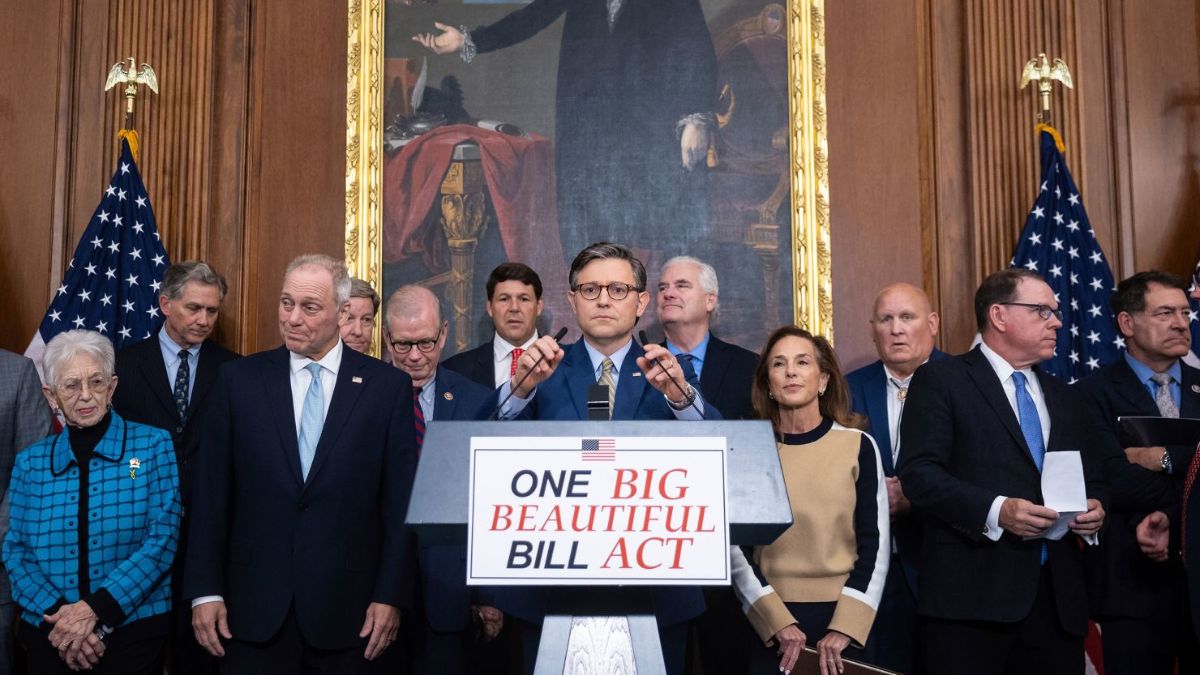On July 4, 2025, President Donald J. Trump signed into law a sweeping package called the “One Big Beautiful Bill.” The act introduces wide-ranging policy shifts covering tax reform, healthcare, immigration, energy, defense, and children’s savings. Some updates take effect immediately, while others roll out over the next several years.
This article breaks down the key changes and timelines to help Americans understand what’s coming—and what they may need to prepare for.
Tax Reforms: Benefits You’ll See Now
A major section of the law focuses on tax relief and family breaks that start this tax season.
Permanent Individual Tax Cuts
The 2017 tax cuts are now permanent. Lower tax brackets remain in effect, meaning Americans will continue to benefit from reduced rates when filing their 2025 taxes and beyond.
Expanded Child Tax Credit
More than 40 million families will receive larger tax breaks under the permanent expansion of the Child Tax Credit. This boost takes effect immediately for 2025 filings.
Auto Loan Interest Deduction (2026)
Starting in tax year 2026, individuals can deduct interest paid on auto loans for vehicles made in the U.S. This aims to ease costs for buyers of American-made cars.
“Trump Accounts” for Children
New tax-deferred savings accounts will be automatically seeded with \$1,000 by the government at birth—starting with babies born after July 4, 2025. Parents can contribute more over time, and earnings grow tax-free.
Healthcare & Social Programs: Long-Term Shifts
Major changes to Medicaid, SNAP, and Social Security are set to phase in over multiple years.
Medicaid Work Requirements by 2027
Beginning phased rollout to 2027, Medicaid beneficiaries aged 19–64 must work or participate in community activities to maintain eligibility. States are given flexibility in implementation.
SNAP Funding and Coverage Cuts
Starting in 2026, federal funding for SNAP (food assistance) will be reduced, shifting costs to states and tightening eligibility checks, potentially affecting coverage for many low-income families.
Social Security Tax Exclusions
For about 88% of seniors, Social Security benefits will no longer be taxable. This change applies to filing in 2026 tax year, offering relief to retirees.
Immigration & Border Security: Immediate Investments
The bill ramps up spending and fee structures in immigration and border control.
\$100 Billion for Enforcement & Tech
An immediate allocation of \$100 billion boosts immigration enforcement, including investments in surveillance, infrastructure, and a new system dubbed the “Golden Dome.”
Visa & Asylum Fee Hikes by 2025 End
New processing fees for visas and asylum applications will begin rolling out by the end of 2025, expected to raise revenue and alter access patterns for immigrants and workers.
Defense & Infrastructure: Building Over Time
Significant projects in military and infrastructure receive long-term funding under the new law.
\$150 Billion Defense Boost
Over several years, the Pentagon will receive an additional \$150 billion—dedicated to shipbuilding, missile defense systems, and innovation in military tech. Initial funding and projects begin in 2026.
\$12.5 Billion for Air Traffic Control Overhaul
The bill allocates \$12.5 billion to modernize the U.S. air traffic control system. Construction and upgrades launch in 2026 and continue for several years.
Energy Policy: A Shift in Incentives
New priorities take the place of previous green energy programs.
Fossil Fuel Subsidies Rise
Effective immediately, the bill phases out many clean energy tax credits (for solar and wind). In parallel, subsidies for oil, gas, and other fossil fuel sectors increase.
These shifts are expected to impact both corporate energy strategies and consumer-facing pricing.
Projected Effects: Debt, Coverage Loss, and Debate
Several large-scale consequences are already emerging from the legislation.
National Debt Growth—Estimated \$3.4 Trillion
The Congressional Budget Office projects that the law will increase federal debt by \$3.4 trillion over the next decade, raising concerns about long-term fiscal discipline.
11.8 Million Americans May Lose Medicaid
Policy changes could strip nearly 12 million people of Medicaid coverage, affecting healthcare access for low-income families and vulnerable populations.
Public Opinion—Deeply Divided
Surveys show stark divisions: while many Americans welcome tax cuts and defense investments, others voice concern over program cuts and long-term debt. Public debate continues.
Five FAQs on the “One Big Beautiful Bill”
1. What tax benefits start immediately?
Permanent individual tax cuts and expanded Child Tax Credit apply to 2025 tax year filings. New vehicle loan interest deduction begins in 2026.
2. Who qualifies for the new “Trump Accounts” for kids?
Children born after July 4, 2025 automatically receive a \$1,000 government deposit into a tax-deferred savings account. Parents may also contribute funds.
3. How will Medicaid rules change?
Beneficiaries aged 19–64 may need to meet work or community engagement requirements starting by 2027, depending on state rollout schedules.
4. What will happen to SNAP benefits?
Federal funding is being cut starting in 2026, meaning states may tighten eligibility or reduce benefits to manage new cost burdens.
5. How will this impact U.S. energy policy?
Clean-energy tax credits (e.g. solar, wind) are being reduced immediately, while subsidies for fossil fuel industries are increasing, signaling a shift in energy strategy.















